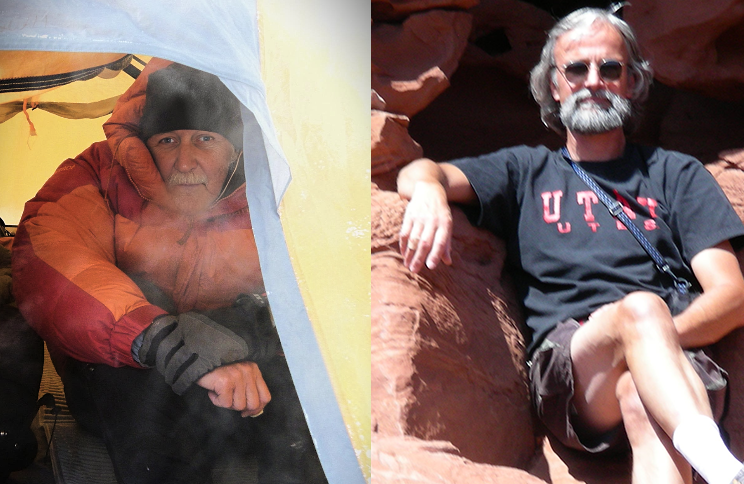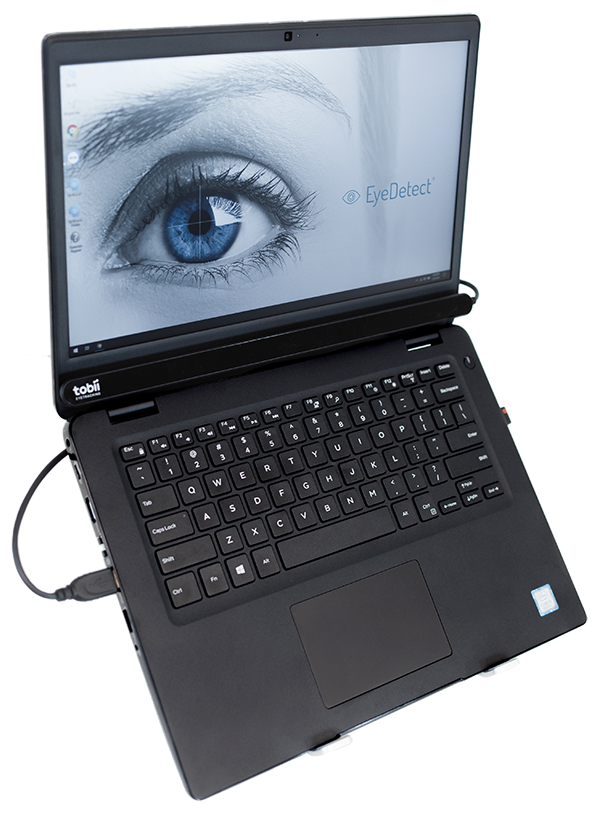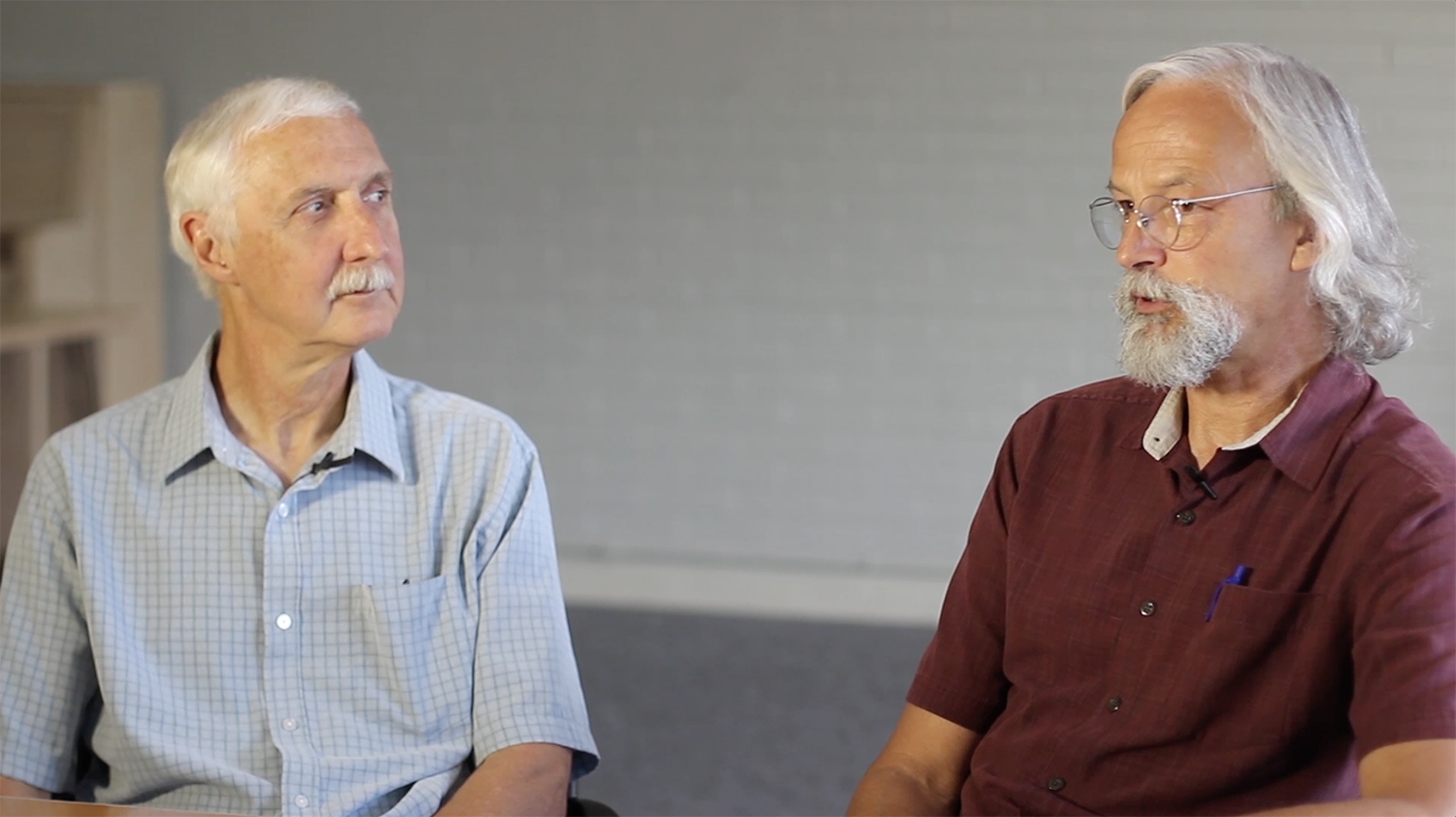The remarkable story of how the idea for a new lie detection technology went from a concept to a worldwide brand.
Origin Story | How EyeDetect came to be.

Taking Lie Detection Technology to New Heights
The remarkable story of how EyeDetect went from a concept to a worldwide brand.
The Drive
Early one July morning in 2002, two research scientists from the University of Utah in Salt Lake City climbed into a wintergreen Subaru Outback and began a transformational journey to Washington state. These scientists, Dr. John Kircher and Dr. Doug Hacker, were avid mountain climbers. They planned to summit the three-mile-high, snow-capped, picturesque peaks of Mt. Rainier, which they had each previously done.

Little did these scientists know that the conversations they were to have — during this 12-hour drive each way and while on their 3-day summit of Mt. Rainier — were going to drastically disrupt and forever change the trajectory of the lie detection industry 12 years later.
During the drive to Washington’s tallest mountain, John and Doug began to talk shop. Dr. Kircher is a world-renowned expert at detecting deception, credited with co-inventing the computerized polygraph in 1991. Dr. Hacker is an educational psychologist with expertise in writing and reading comprehension processes.


The Disruptive Thought

During their discussion, they were curious if there might be a way to detect deception more easily, other than polygraph (a technology that has been around since 1921). Inspired by previous eye tracking research of others, they wondered if lies could accurately be detected from the eyes.
Little did they know the profound significance they were about to give to the well-known adage: “The eyes are the window to the soul.”
Upon arriving at Mt. Rainier, they met with a third hiking buddy, Don Krapohl, at the Paradise Inn — located at the base of Mt. Rainier. Over breakfast, the research scientists shared with Don their idea about detecting lies from the eyes. Don, who at the time was a federal polygraph examiner for the U.S. government, was intrigued and wanted to hear more.
But at the same time, Don was leery. Over the years at his job with the U.S. government, he had previously seen other lie detection concepts. However, none had panned out because they couldn’t answer two vital questions.
[From left to right: Don Krapohl, John Kircher and Doug Hacker.]

2 Important Questions
After finishing another bite of his breakfast, Don set down his fork, looked at his two friends, and asked these two well-respected scientists if their concept could satisfactorily answer his two questions:
First, is it practical? And second, is it valid?
They quickly assured Don the concept was practical because the technology already existed to track eye movements. In answering whether the concept was valid, they told Don they were going to find out. They shared how two of their graduate students had already written a research paper on pupillary responses being more valid than the most useful signal in polygraph tests.
Don’s interest was piqued. This was a novel concept. Measuring changes in eye behavior caused by changes in a person’s cognitive load during a true/false test could be a completely new way to accurately detect deception.

The scientists explained their hypothesis to Don in more detail, essentially: When we lie, it forces us to think harder. When we think harder, that increases our cognitive load. When our cognitive load increases, our involuntary eye behavior changes (“involuntary” meaning we can’t control these changes). Involuntary eye behavior includes pupil dilation, blink rate and fixations. Now, if there was a way to measure these subtle changes in involuntary eye behavior, could we then accurately determine if a person was being truthful or deceptive while answering true/false questions on a computer?
A Major Paradigm Shift
In remembering his conversation with John and Doug years later, Don said, “Their concept changed the entire paradigm of the lie detection world.”

The trio continued discussing this intriguing concept while they climbed. And John and Doug discussed it further during their return to Salt Lake City.
Within two weeks after returning home, they began researching their concept in their lab. Soon three other scientists with additional expertise in eye-tracking equipment, test construction, and criminal investigations joined.

It took more than 10 years for this team of scientists at the University of Utah to demonstrate that deception could be accurately detected from a person’s involuntary eye behavior. From left to right: John Kircher, Doug Hacker, Dan Woltz, Anne Cook and David Raskin.

It took this science team more than a decade to conduct research, test and retest their concept, develop a protocol and refine the computer algorithms until they were able to support beyond a reasonable doubt that they could accurately detect deception from a person’s involuntary eye behavior.
In 2010, the technology was licensed to a Utah tech startup, later renamed Converus. Converus branded the technology with the name “EyeDetect,” which was officially released to the world in 2014.
What was once a mere concept contemplated while driving to hike a mountain one summer day in 2002 was now a new, automated, computer-based lie detection technology that uses an eye-tracking camera to measure changes in a person’s involuntary eye behavior during an automated true/false or yes/no test.
The vision and dedication of these scientists — along with the encouragement and support of Don Krapohl — have made a global impact on detecting deception. EyeDetect is now used by hundreds of customers worldwide. Governments, law enforcement, corporations, credibility assessment experts/polygraph examiners, defense attorneys, private investigators and others who rely heavily on the ability to accurately validate truth and expose lies in people and situations, can now do so quickly, cost-effectively, and unbiasedly.
From Idea to Global Impact
With EyeDetect, potential and existing employees are now screened for involvement in serious crimes, drug use, sabotage, espionage, terrorism and other criminal and unethical behaviors. Defense attorneys involved in high-profile murder cases quickly determine if their client is innocent or guilty. Private investigators solve difficult crimes far quicker. Even athletes on the world stage are exonerated of false allegations.
This is the true story of why — thanks to John Kircher, Doug Hacker and their science team — lovers and defenders of truth everywhere now have a new methodology that exposes and defeats the enemy called lies, dishonesty and deception… while making the world a more honest, safe and trustful place.

John Kircher (left) and Doug Hacker’s idea to accurately detect deception in the eyes ended up causing a major paradigm shift in the lie detection industry. Their invention, EyeDetect, is now used around the world.

Converus (“with truth”) provides scientifically validated credibility assessment technologies that help protect countries, corporations and communities from corruption, crime and threats.

